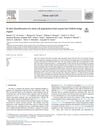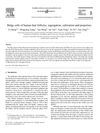TLDR Canine hair follicle cells show stem cell properties, aiding hair growth.
The study investigated the multipotent stemness of canine hair follicle stem cells (cHFSCs) using Fluorescence Activated Cell Sorting (FACS) and immunostaining techniques. Canine hair follicular cells were cultured in Williams’E media with growth factors, and 18.28% of the cells were found to be positive for the CK15 marker, indicating their stemness. The positive expression of CK15, observed with DAPI counterstaining, suggested that cells in the canine hair follicular bulge region acted as precursors involved in the hair cycle.
 5 citations
,
December 2017 in “Tissue and cell/Tissue & cell”
5 citations
,
December 2017 in “Tissue and cell/Tissue & cell” Researchers found stem cells in dog hair follicles using specific markers.
19 citations
,
May 2016 in “Cytotechnology” 13 citations
,
April 2016 in “Journal of Visualized Experiments” The method successfully isolates hair follicle stem cells and skin cells from mice for research.
37 citations
,
October 2009 in “Veterinary Dermatology” Canine hair follicles contain stem-like cells with high growth potential.
 27 citations
,
January 2006 in “Colloids and Surfaces B: Biointerfaces”
27 citations
,
January 2006 in “Colloids and Surfaces B: Biointerfaces” Researchers found that bulge cells from human hair can grow quickly in culture and have properties of hair follicle stem cells, which could be useful for skin treatments.
550 citations
,
December 2005 in “The Journal of clinical investigation/The journal of clinical investigation” Researchers successfully isolated and identified key markers of stem cell-enriched human hair follicle bulge cells.
319 citations
,
November 2005 in “Proceedings of the National Academy of Sciences” Hair follicle stem cells can help repair damaged nerves.
 March 2022 in “Indian Journal of Animal Research”
March 2022 in “Indian Journal of Animal Research” Dog hair follicle stem cells can turn into fat cells.
April 2020 in “Journal of animal research” Canine hair follicles have stem cells in the bulge region.
 5 citations
,
December 2017 in “Tissue and cell/Tissue & cell”
5 citations
,
December 2017 in “Tissue and cell/Tissue & cell” Researchers found stem cells in dog hair follicles using specific markers.
36 citations
,
April 2010 in “The journal of investigative dermatology/Journal of investigative dermatology” Canine hair follicles have stem cells similar to human hair follicles, useful for studying hair disorders.

Canine fetal hair follicle stem cells show pluripotency, with higher S100 protein expression at 40 days.




